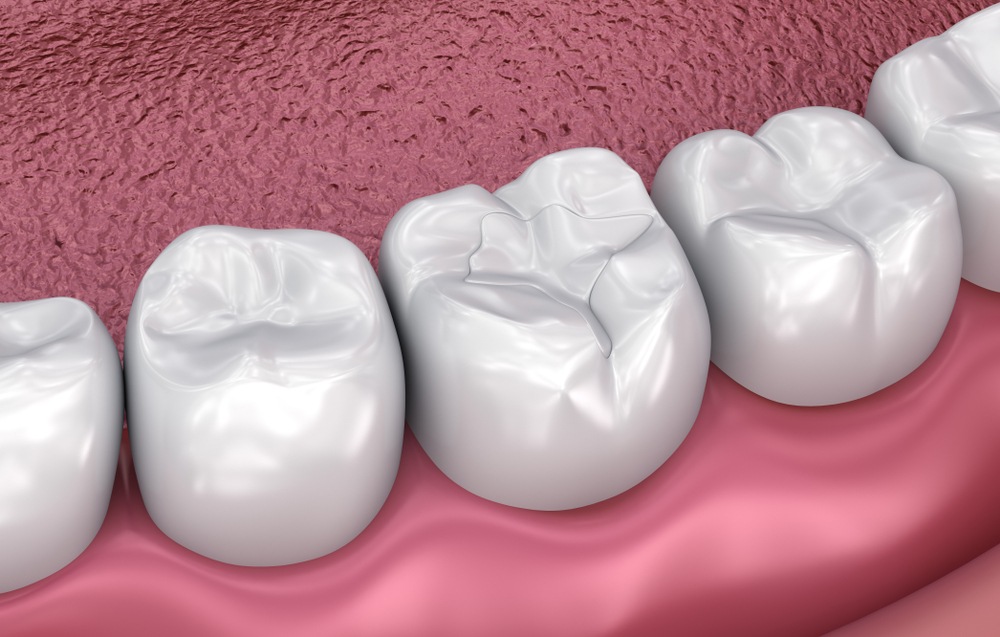Sealants

For decades, dental patients had to settle for tooth brushing and routine cleanings alone to minimize the chance of cavities. Fluoride treatments were one option for strengthening the enamel naturally, but nothing could directly provide protection. The development of dental-safe sealants opened up new opportunities to protect the teeth from direct damage.
Your dentist will apply a sealant if it’s a choice for reducing damage. At LaRock Dental, we only recommend treatments with a high value for our clients. When we recommend sealants to children or adults, it’s usually because there’s a direct risk of extra damage. It’s our goal to clearly explain exactly what your particular risk factors or issues are during the exam so you know why sealants are the best choice for your situation.
What Is the Process for Applying Dental Sealants?
A thorough dental cleaning is the first step for applying sealants. The clear sealant material can’t bond to your teeth and provide reliable protection unless it’s applied over a clean and smooth tooth surface. A clear resin-based liquid is brushed over the teeth, allowing the dentist to ensure that even the crevices and edges are well-covered. Then the dentist will cure the material with a special light, ensuring the sealant is dry before you leave the office.
Sealants only last for a limited amount of time, depending on the wear and tear on your teeth. Most people enjoy at least a few years of service from each application before it wears away. You won’t notice the resin disappearing, but the dentist can tell you when it’s time for new sealants if they’re still needed. Most people that need them once will continue to need them refreshed to protect the enamel below.
Are Sealants Only for Children?
Sealants are often recommended for children that have compromised enamel. Some children are born with weak or non-existent enamel, while others weaken this layer of the teeth with sugary snacks and acidic drinks.
However, sealants are not just for children. Many adults also benefit from sealants during at least the later years of their life. It all depends on the condition of your enamel and any factors in your life that might damage it. Getting sealants before your enamel is compromised is generally recommended to prevent cavities and decay.
Which Teeth Are Covered With the Sealant?
Not all teeth benefit from sealants. The material bonds better to the top surface of teeth and is particularly useful for filling in the folds and fissures of the pre-molars and molars. Coating the sides and inner faces of these teeth also helps you floss more easily without catching the material on rough edges. Sealant is not generally applied to the front teeth.
What Do Sealants Do?
Resin-based sealants mimic the natural protective effects of the tooth’s enamel layer. A tooth coated in sealant is less likely to keep food trapped up against itself, and it’s also easier to clean with both brushing and flossing. In the long run, this translates to a reduced chance of cavity development. That’s valuable for both children and adults who aren’t big fans of getting fillings. Getting teeth sealed is far quicker than filling and doesn’t require any anesthetic.
Preventative Dentistry Options in Manchester
Discuss your interest in sealants with our team, and our dentists can tell you if they’re a good fit for your needs. Make an appointment today or give us a call at (734) 428-8323.
Request An Appointment Today
If you’re looking for compassionate and quality dental care in Manchester, MI, you can rely on LaRock Dental and the caring team under Dr. LaRock.
Testimonials
We Love Hearing From Our Patients

Front desk staff, dental hygienist and doctors were pleasant and professional.
– Gerald M.

“My hygienist was amazing and dentist was excellent. Highly recommend!”
– Brent L.

“Great small town practice with a caring staff.”
– Michael B.
 126 East Main Street Manchester, MI 48158
126 East Main Street Manchester, MI 48158 734-428-8323
734-428-8323
